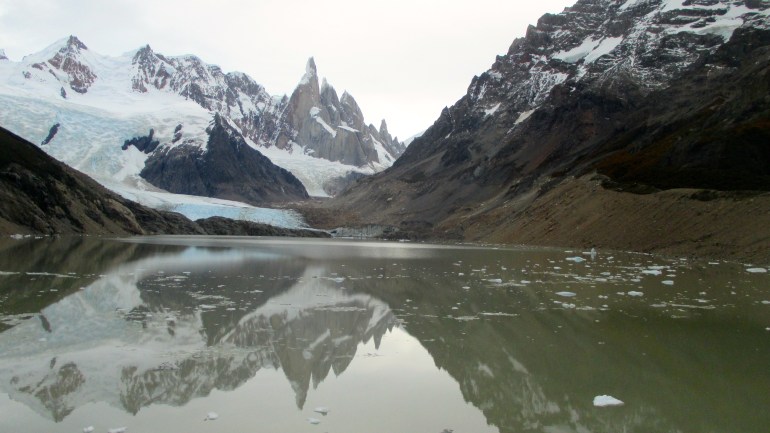Here I am in El Chaltén, Argentina’s trekking capital of the world. It’s late morning, and I’m just getting off my bus stop to walk to a hostel where I’ll be spending a small amount of time over the next two days with my little brother.

El Chaltén is a small village nestled a few hours away from popular travel destination, El Calafaté. It’s infamous for its tempestuous weather but the home to a four-mountain chain; Cerro Torre, Torre Egger, Punta Herron, and Cerro Standhart. It’s also a vestibule for adventure warriors and climbers.

My brother and I check into our six bedroom dorm, drop our things off, and then hustle our way onto a 7.3 km trail to Laguna Torre, a focal point of Cerro Torre where you can view a glacier lake and rime ice. At this point, it’s already early afternoon, and we’re going to have to race the sunset with a six-hour round trip journey. Luckily, we just missed a storm leaving us optimistically with 68-degree highs, white blanket skies and easy-going weather conditions.
We make our way through town in a matter of minutes climbing a steep hill to the base of the trail where we find signs pointing us in the right direction.

The hike itself is of moderate difficulty, but you quickly forget when you pass a river and a waterfall followed by a mystically intriguing open valley of decapitated trees with Cerro Torre in the distance.

Even though this is a popular trail for trekkers, I didn’t feel as though our experience was compromised in any way. There were very few hikers along the path, and we only ran into one small group of young backpackers who were daring enough to unpack their tents for an overnight stay.
We finally make it to Laguna Torre and were welcomed with a hidden slate-colored lagoon.

Up close, Cerro Torre looked like a backdrop of an Ansel Adams photo. The atmosphere changed a bit bringing in cooler temperatures than I anticipated. The blanketed skies opened up, and the wind was picking up lightly. Everything began to feel more solitaire.

It’s nearly 6 pm at this point, and we want to hustle our way back into town before it gets too dark. We’re racing against the sunset with dense clouds fleeting. The 50 shades of gray transformed into one of the most powerful and beautiful Cerro Torre sunsets Patagonia had to offer us.

Do you think this was worth the three bus rides and 19 hours of travel to get here? Tell me what you think in the comment section below.













































